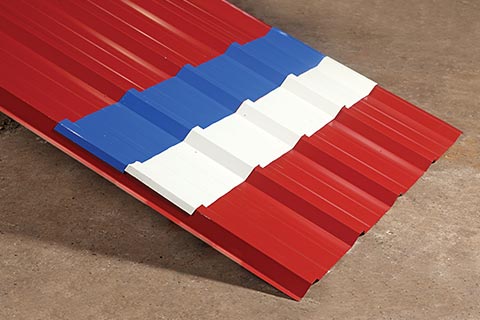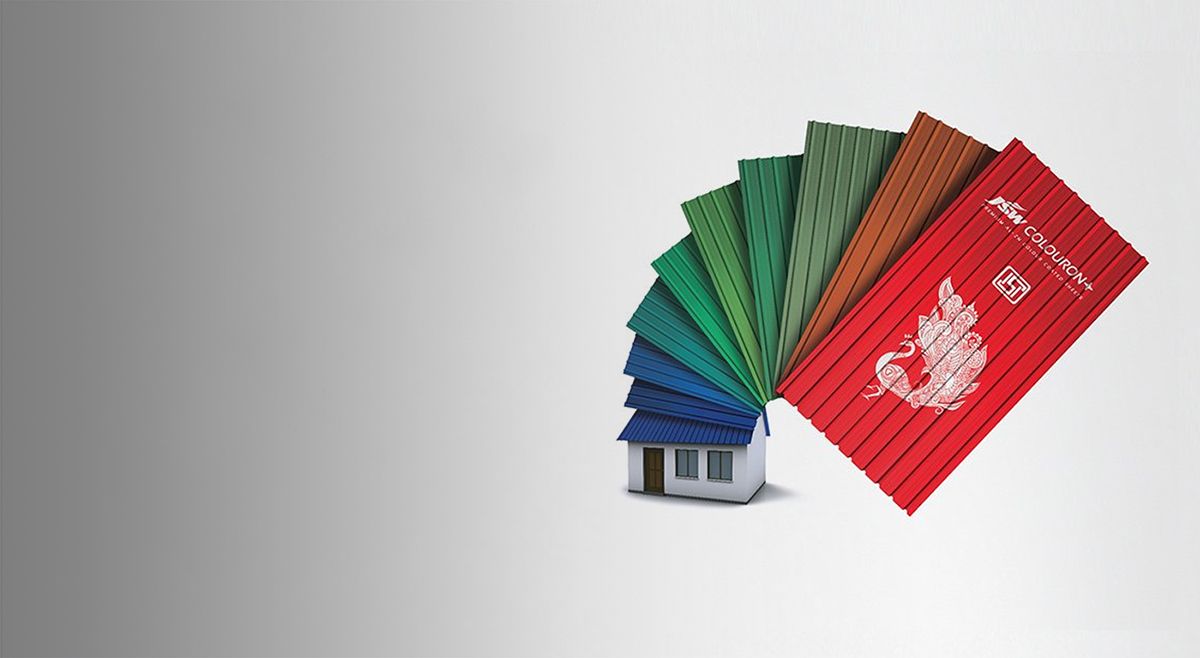Galvalume: Advancing Galvanization
When using corrugated sheets in building projects, what is the ideal metal roofing you should choose? Should you opt for galvanized steel or Galvalume metal roofing? To answer this question, you need to know what Galvalume is, how it is different from Galvanized Steel and how it is transforming the way we understand galvanization.
Let us begin with the origin of Galvalume. It was invented by Bethlehem Steel in 1972.JSW Steel is the first Licensee Galvalume producer in India that uses technology from BIEC International Inc., USA. Galvalume is an advanced version of galvanized roofing product that consists of steel coils coated with an alloy of 55% aluminum and approximately 45% zinc by weight. Galvalume also has a small amount of silicon to ensure smooth and durable adhesion of the alloy to the steel. It looks very similar to galvanized steel, but in Galvalume, the visible crystals are smaller and bound closer together, giving it a smoother appearance.
The zinc-aluminum alloy in Galvalume enhances the qualities of both steel and aluminum as well as the overall process of galvanization. Galvalume is endowed with good bare edge galvanic protection and forming qualities, like a galvanized material. Its barrier corrosion resistance and heat resistance are as high as aluminum. Consequently, Galvalume delivers unyielding protection against rust, fire and the inclement weather elements and provides a sturdy covering.

Usually, Galvalume is coated, but it is available in bare and pre-coated versions too. It has excellent performance life in bare exposures as well. When choosing the Galvalume sheet, you need be cautious about the coating used on it because correct coating is critical for the length and conditions of the entire warranty of the panel product. Now, coated metal roof panels have progressed from a single coat, straight polyester paint system to a poly vinyl-idene fluoride (PVDF) system.
PVDF resin has better chalk resistance and gloss retention in addition to stain and chemical resistance. Being softer than polyester, it is highly flexible without any risk of cracking. Advanced pretreatments and primers with superior paint coating have increased product warranties considerably. Still, people usually just ask if there is a warranty yet not how many years the warranty lasts; neither do they check to ensure the quality of the straight polyester system. Also, whenever one is presented with two painted Galvalume panels with a sharp difference in the price, then the less expensive can be justifiably suspected of having less effective coating.
Architects should bear in mind though that Galvalume should not be used on, in, or around concrete or mortar. Moreover, it should not be used in agricultural or animal husbandry set-ups as concrete and mortar are highly alkaline environments. Bare Galvalume and painted Galvalume sheets suffer rapid corrosion when in contact with concrete and mortar.
That said, bare Galvalume and coated Galvalume panels have outstanding corrosion resistance in a wide variety of environments, including residential, commercial, industrial, marine and even severe marine environments. It has extraordinary heat reflectivity, which results in lower energy load on buildings and greater interior comfort. This not only saves energy bills but also is vital considering the steady shift towards sustainable living.
Galvalume is evidently the metal roofing material of choice because of its strength, outdoor corrosion resistance and longevity. You can now put your doubts and confusion over which material to use for a strong and sustainable roofing to rest.

